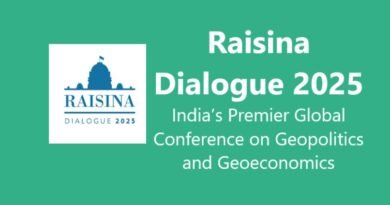
The Flawed Justification Behind the U.S. 26% Tariff on India: A Critical Analysis
Introduction
The recent imposition of a 26% tariff on Indian imports by the United States, under President Donald Trump’s “reciprocal tariff” policy, has sparked significant debate and concern. The U.S. administration justifies this move by asserting that India imposes a 52% tariff on American goods. However, a closer examination reveals discrepancies in this claim, suggesting that the rationale behind the tariff lacks a solid foundation.
Dissecting the 52% Tariff Claim
President Trump’s administration has presented a chart indicating that India imposes a 52% tariff on U.S. imports, leading to the decision to levy a 26% tariff on Indian goods as a “reciprocal” measure. However, this figure appears to be an overestimation when compared to data from various reputable sources.
For instance, a Barclays research note from the previous week estimated that India’s import tariffs on U.S. goods were approximately 10.5% in 2023, which is significantly lower than the 52% claimed by the U.S. administration (Hindustan Times). Furthermore, data from NDTV Profit indicates that India’s weighted average tariff rate on American imports stands at 12%, compared to the U.S.’s previous 3% on Indian goods (NDTV Profit).
These figures suggest that the actual average tariff imposed by India on U.S. imports is substantially lower than the 52% cited by President Trump.
Sector-Specific Tariffs: A Mixed Bag
It is important to recognize that while certain sectors in India do have high tariffs on specific U.S. products, these are exceptions rather than the rule. For example, luxury goods such as high-end automobiles and specific agricultural products may attract higher duties. However, a significant portion of U.S. exports to India face much lower tariffs, contributing to an overall average far below the asserted 52%.
Moreover, recent developments indicate that India is considering reducing tariffs on a substantial portion of U.S. imports. According to Reuters, India has expressed willingness to lower tariffs on over 55% of U.S. goods it imports, which currently face duties ranging from 5% to 30% (Reuters).
Economic Implications of the 26% Tariff
The imposition of a 26% tariff on Indian goods is poised to have far-reaching consequences for both economies.
- For the United States: Consumers may experience increased prices on a variety of Indian products, including textiles, electronics, and automotive components. This could lead to inflationary pressures and reduced consumer spending power.
- For India: The tariff poses challenges for exporters who rely heavily on the U.S. market. Sectors such as electronics and gems and jewelry, which have substantial export volumes to the U.S., are likely to be the hardest hit. Business Standard reports that the U.S. imports nearly $14 billion worth of electronics and over $9 billion worth of gems and jewelry from India, making these industries particularly vulnerable (Business Standard).
Broader Trade Relations and Negotiations
The tariff escalation underscores the complexities of U.S.-India trade relations. Despite the personal rapport between President Trump and Prime Minister Narendra Modi, as highlighted by Bloomberg, the imposition of such tariffs indicates underlying tensions and disagreements on trade policies (Bloomberg).
India’s Commerce Ministry has characterized the situation as a “mixed bag,” suggesting that while some sectors may face challenges, others might find opportunities to adapt and explore alternative markets (India Today).
Conclusion
The U.S.’s decision to impose a 26% tariff on Indian imports, predicated on the claim that India levies a 52% tariff on U.S. goods, appears to be based on an inflated and misleading figure. The actual average tariff is significantly lower, calling into question the justification for such a substantial reciprocal tariff. This move not only strains bilateral trade relations but also has the potential to disrupt industries and economies on both sides. A more nuanced and data-driven approach to trade negotiations would better serve the interests of both nations and promote a more stable global trade environment.
Sources
- Hindustan Times – “How Donald Trump Decided His 26% Tariff for India”
- NDTV Profit – “Trump Tariffs Key Highlights: 26% on Indian Imports, 25% on Autos”
- Reuters – “India Eyes Tariff Cut on 55% of U.S. Imports Amid Trade Talks”
- Business Standard – “Impact of U.S. Tariffs on Indian Exports: Electronics, Pharma, Auto”
- Bloomberg – “Trump Piles Pressure on Modi with 26% Tariff on India”
- India Today – “Commerce Ministry Official on U.S. Reciprocal Tariffs: Mixed Bag or Setback?”
This comprehensive analysis showcases the inconsistencies in the U.S. administration’s tariff justifications while highlighting the potential economic fallout for both nations. Trade policies should be based on factual data rather than political maneuvering, ensuring a fair and equitable global trade system.






